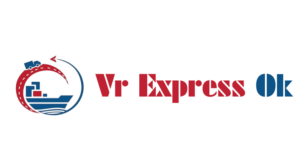Debt is a common aspect of modern life, affecting millions of individuals and families worldwide. While it can sometimes be a useful tool for achieving financial goals, excessive debt can lead to significant stress and financial instability. Understanding how to manage and overcome debt is crucial for regaining control of your finances and building a secure future. In this blog, we will explore the types of debt, the impact of debt on your life, and practical strategies for effective debt management.
1. Understanding Debt
1.1 Types of Debt
Debt can be broadly classified into two categories:
- Secured Debt: This type of debt is backed by collateral, meaning that if you fail to repay, the lender can seize the asset. Examples include mortgages and auto loans.
- Unsecured Debt: This type of debt does not have collateral backing it. Credit cards, medical bills, and personal loans fall into this category. Because they are riskier for lenders, unsecured debts typically carry higher interest rates.
1.2 The Impact of Debt
Debt can affect your life in various ways:
- Emotional Stress: High levels of debt can lead to anxiety, sleepless nights, and relationship strain.
- Financial Limitations: Carrying debt can limit your ability to save for the future, invest, or even afford basic necessities.
- Credit Score Consequences: Accumulating debt can negatively impact your credit score, making it more difficult to obtain loans or favorable interest rates in the future.
2. Assessing Your Debt Situation
2.1 Create a Debt Inventory
The first step in managing debt is to get a clear picture of what you owe. Create a detailed inventory that includes:
- The total amount owed for each debt
- The type of debt (secured or unsecured)
- The interest rate
- Minimum monthly payments
2.2 Calculate Your Debt-to-Income Ratio
Your debt-to-income (DTI) ratio is a key indicator of your financial health. To calculate it:
- Add up your total monthly debt payments.
- Divide that number by your gross monthly income.
- Multiply by 100 to get a percentage.
A DTI ratio above 36% may indicate that you’re over-leveraged, which can complicate your financial situation.
3. Developing a Debt Management Plan
3.1 Create a Budget
Establishing a monthly budget can help you allocate funds for debt repayment. Track your income and expenses to identify areas where you can cut back and redirect that money toward your debts.
3.2 Prioritize Your Debts
There are two popular methods for prioritizing debt repayment:
- Avalanche Method: Focus on paying off the debt with the highest interest rate first while making minimum payments on others. This approach saves you money on interest over time.
- Snowball Method: Concentrate on paying off the smallest debt first. Once it’s paid off, move to the next smallest. This method can provide a psychological boost as you see debts eliminated.
3.3 Set Realistic Goals
Break your debt repayment into manageable, achievable goals. For instance, aim to pay off a specific amount each month or to eliminate one debt by a certain date.
4. Exploring Debt Relief Options
4.1 Debt Consolidation
Debt consolidation involves combining multiple debts into a single loan, often with a lower interest rate. This can simplify payments and reduce monthly obligations. However, it’s important to ensure that consolidation won’t lead to further debt accumulation.
4.2 Negotiating with Creditors
Don’t hesitate to reach out to your creditors to discuss your situation. They may be willing to negotiate lower payments, interest rates, or settlement options. Being proactive can lead to favorable outcomes.
4.3 Credit Counseling Services
Consider working with a nonprofit credit counseling service. These organizations can provide guidance, help you create a budget, and negotiate on your behalf.
4.4 Bankruptcy as a Last Resort
If your debt situation is dire, bankruptcy may be an option. While it can provide relief, it also has long-term implications for your credit score and future borrowing. Consult a financial advisor or attorney before making this decision.
5. Building Healthy Financial Habits
5.1 Live Within Your Means
Adopt a lifestyle that prioritizes needs over wants. Avoid accumulating new debt while you’re in repayment mode. This discipline will set you on the path to financial freedom.
5.2 Establish an Emergency Fund
Once you start managing your debt effectively, prioritize building an emergency fund. This will provide a cushion for unexpected expenses, reducing the likelihood of falling back into debt.
5.3 Educate Yourself on Personal Finance
Invest time in learning about personal finance through books, podcasts, or online courses. The more knowledgeable you are, the better decisions you’ll make in the future.
5.4 Monitor Your Credit Score
Regularly check your credit report for accuracy and keep an eye on your credit score. This will help you understand how your debt repayment efforts are impacting your credit health.
6. Conclusion
Managing and overcoming debt is a journey that requires dedication, planning, and perseverance. By understanding your debt situation, creating a structured repayment plan, and developing healthy financial habits, you can regain control of your finances and work toward a debt-free future. Remember, the key is not just to eliminate debt, but to build a solid foundation for long-term financial health.

